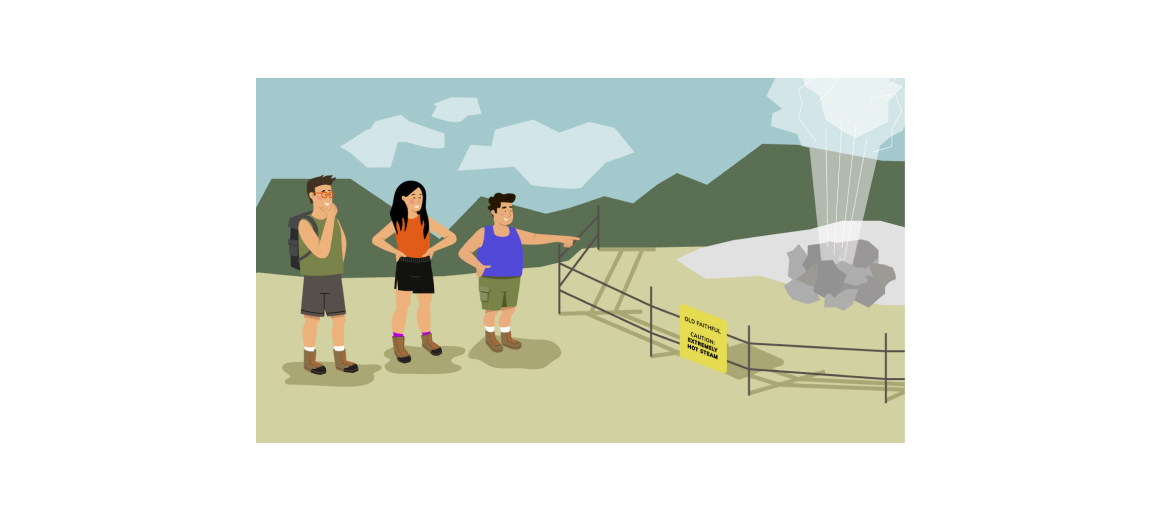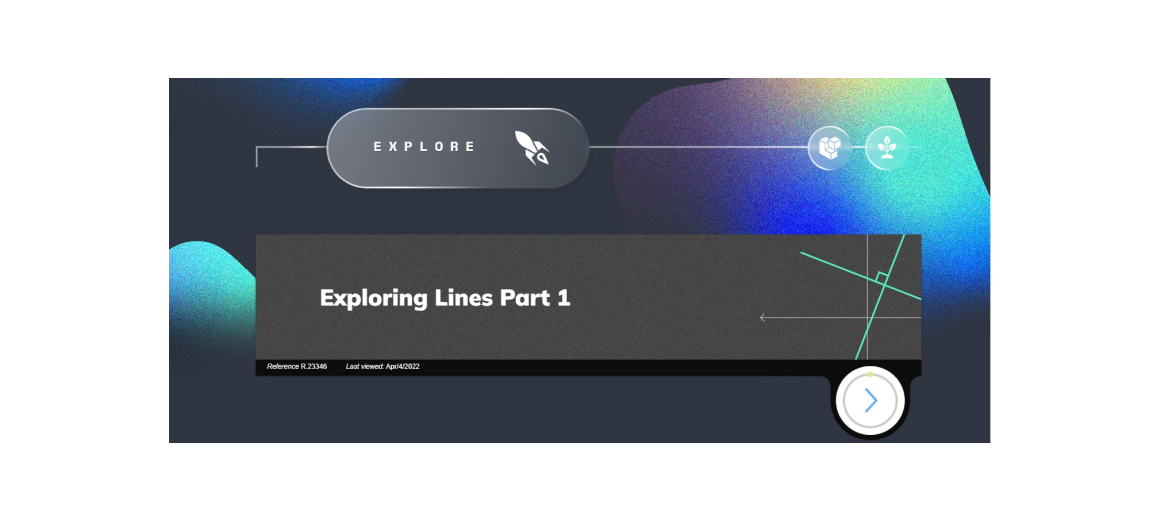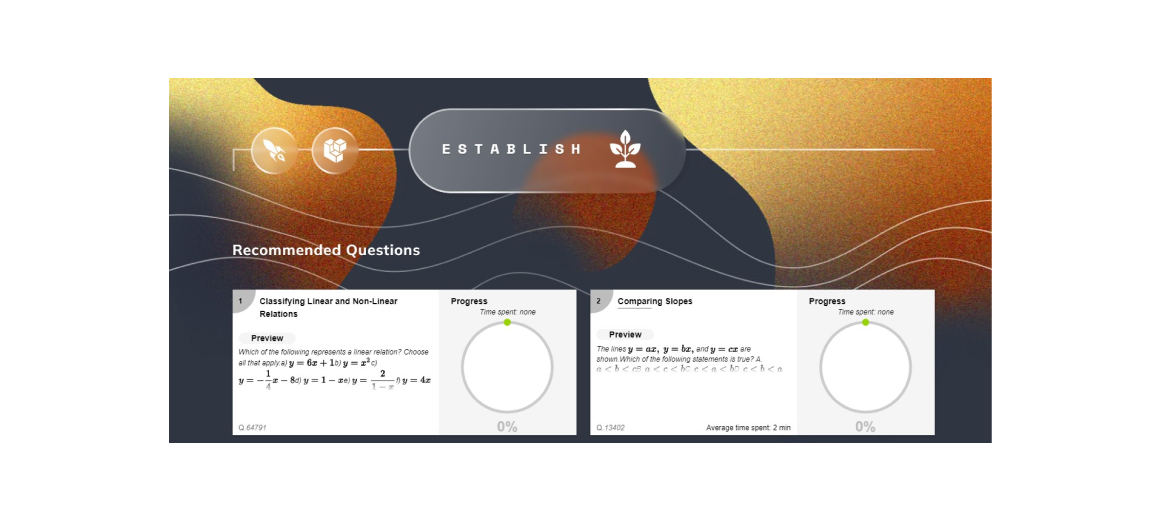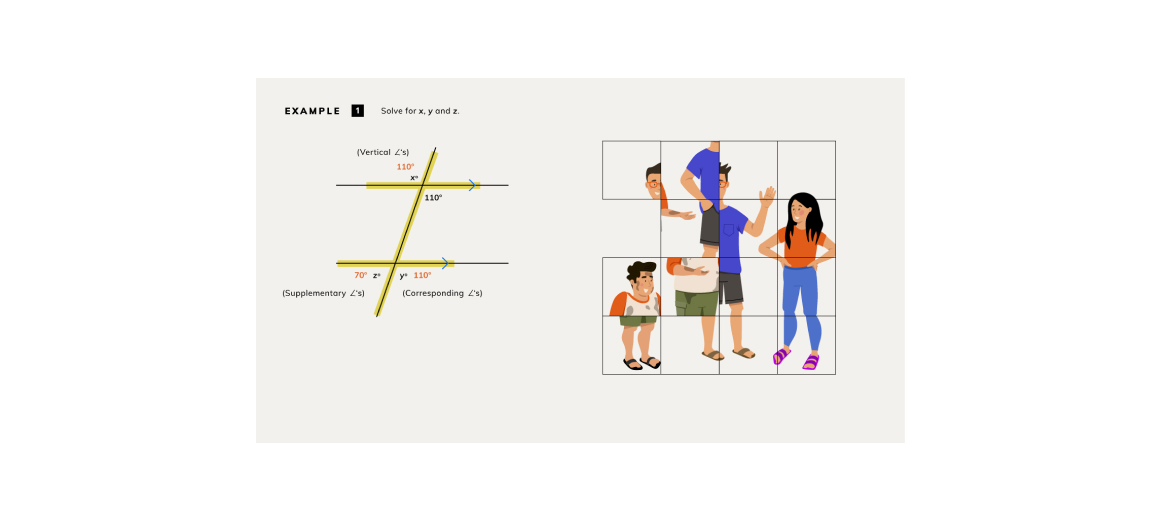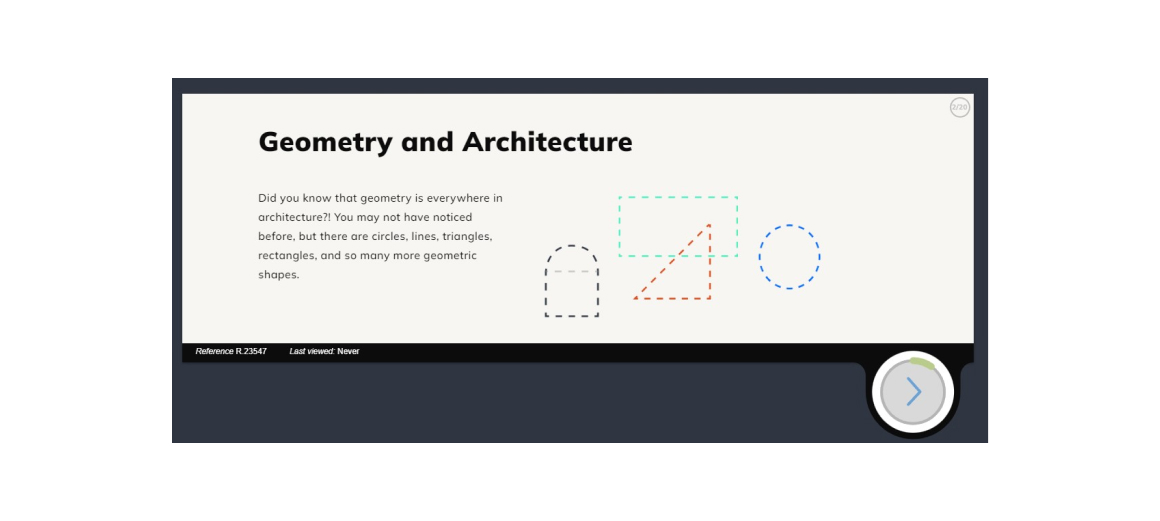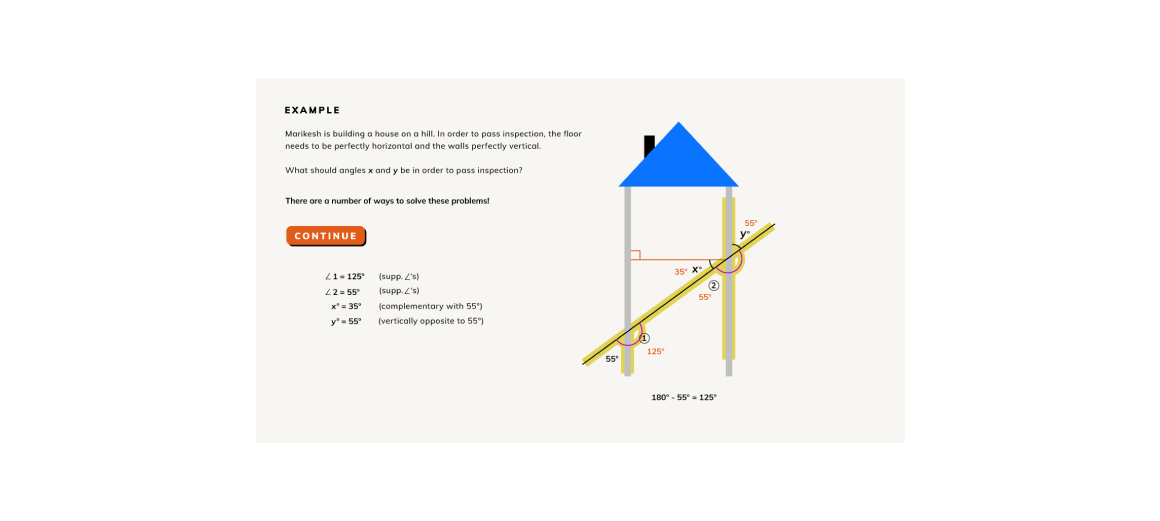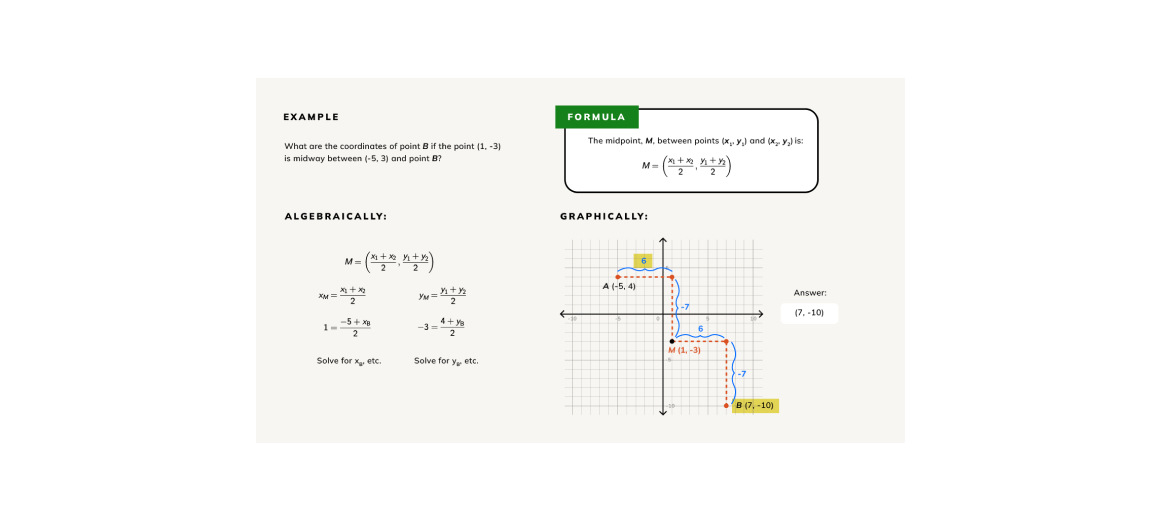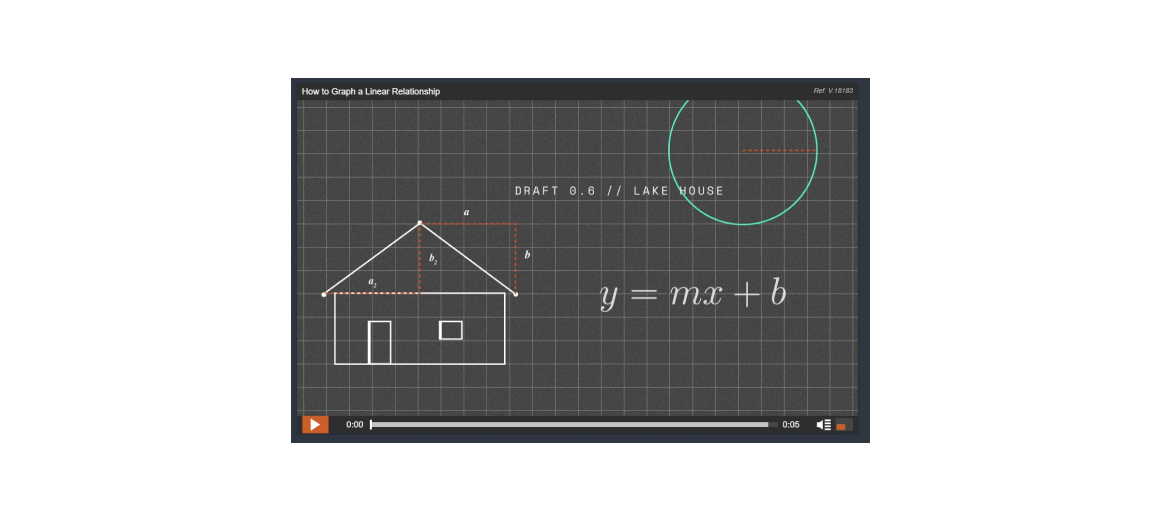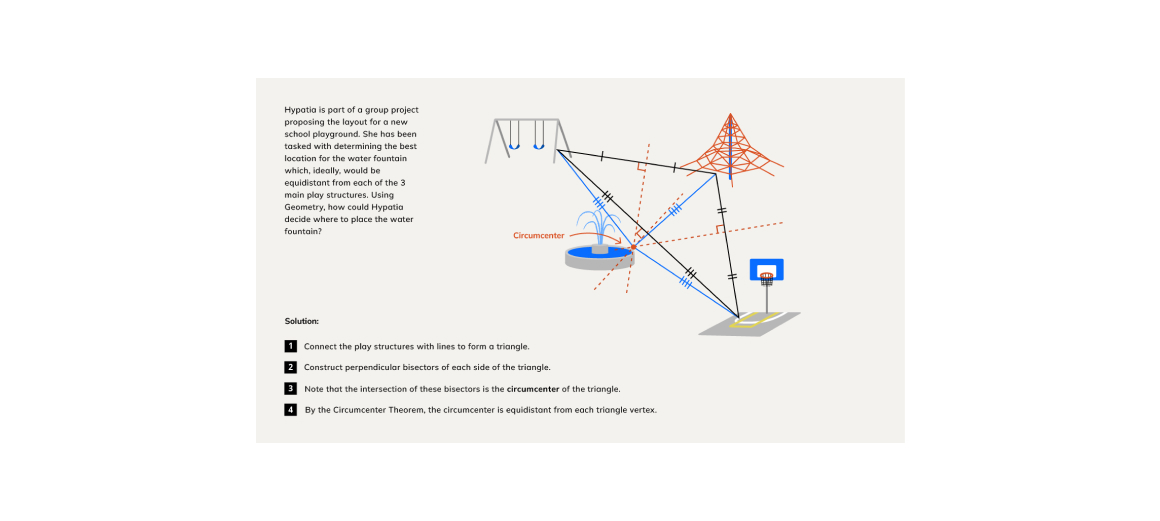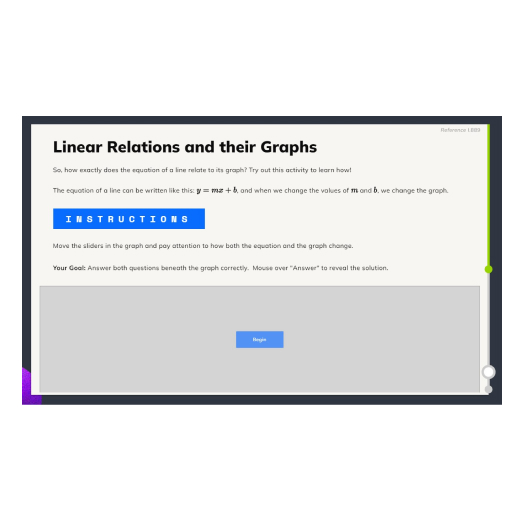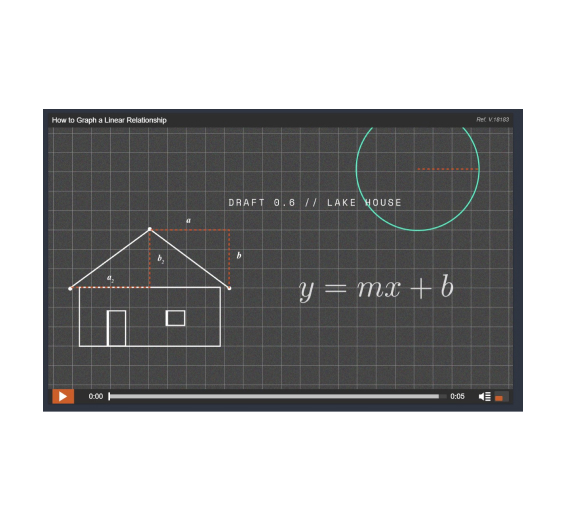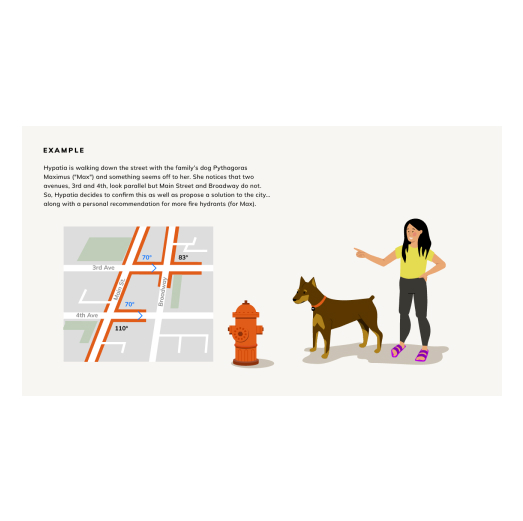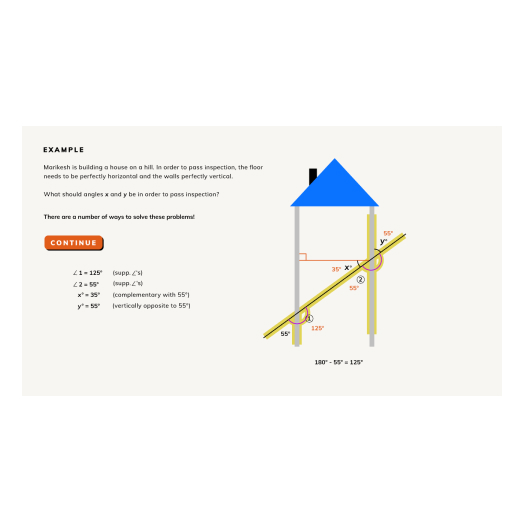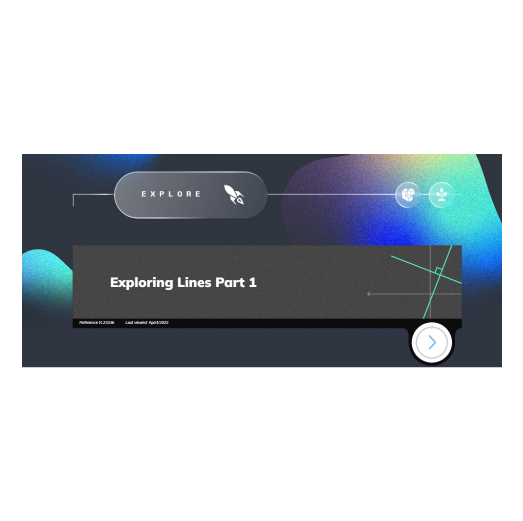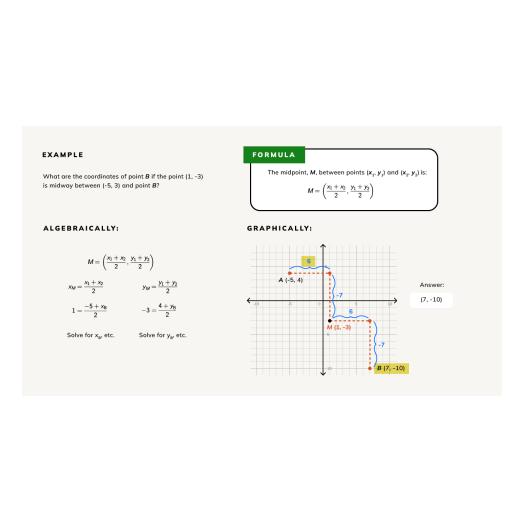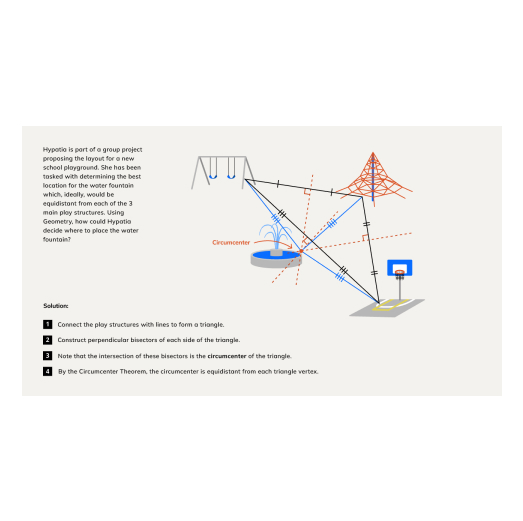Geometry
From the times of Ancient Greece and earlier, to 17th century Europe and beyond, humanity’s understanding of geometric principles and relationships has developed into something powerful, beautiful, and applicable. Indeed, this branch of mathematics called Geometry has become fundamental and even essential to everyday life. Students of this course will experience both the development and application of geometry as they explore and interact with topics such as angles, lines, triangles, circles, transformations, and more. Along the way, students will perform constructions in a variety of mediums, analyze and complete deductions and proofs, and apply the geometric principles and theorems that have been discovered over the centuries. Students will also have fun meeting geometry-loving siblings who get into all sorts of adventures and predicaments, which — you guessed it — require geometry to solve.
From beginning to end, the StudyForge Geometry course is set up for student success. Each unit contains numerous interactive explorations that encourage students to discover geometric principles and relationships. Each lesson includes interactive videos that allow students to proceed at their own pace, with the ability to pause and rewind at any point. Additionally, each video is accompanied by a student-friendly note package to encourage deeper engagement and retention. To help students avoid getting stuck and to learn how to solve even the most challenging of geometric problems, every practice question has step-by-step solutions. Furthermore, students are prepared well for the wide variety of assessments they will encounter, and every quiz and test is randomized to allow retakes, encouraging students to strive for mastery. Teachers of the course are equally well-resourced, with detailed answer keys to all assessments, a customized dashboard, and supportive analytics to enable them to help all of their students succeed, whatever their skill levels are.
Table of Contents
Lesson 1: Some Terminology and the Coordinate Plane
Lesson 2: Slope
Lesson 3: The Equation of a Line Part 1: Slope-Intercept Form
Lesson 4: The Equation of a Line Part 2: General and Point-Slope Form
Lesson 5: Parallel and Perpendicular Lines
Lesson 6: Distance and Midpoint Formulas
Lesson 1: Geometric Constructions
Lesson 2: Bisecting and Other Constructions
Lesson 3: Introduction to Angle Relationships and Terminology
Lesson 4: Parallel Lines and Transversals – Solving and Reasoning
Lesson 5: Parallel Lines and Transversals – Applications
Lesson 1: Triangle Properties
Lesson 2: Triangle Inequalities
Lesson 3: Triangle Congruence Part I
Lesson 4: Triangle Congruence Part II
Lesson 5: Triangle Bisectors
Lesson 6: Triangle Medians and Altitudes
Lesson 1: Polygons and Quadrilaterals
Lesson 2: Parallelograms
Lesson 3: Similarity in Polygons
Lesson 4: Reflections
Lesson 5: Rotations
Lesson 6: Translations
Lesson 7: Dilations
Lesson 8: (Enrichment) Fractals
Lesson 1: Introduction to Trigonometry
Lesson 2: The Three Ratios
Lesson 3: Application of Trigonometric Ratios
Lesson 4: Special Angles and Triangles
Lesson 5: The Sine Law
Lesson 6: The Cosine Law
Lesson 1: Circle Basics and Sectors
Lesson 2: Circle Arcs and Angles
Lesson 3: Circle Intersections
Lesson 4: Circles and Polygons
Lesson 5: Other Circle Geometry Relationships
Lesson 6: Conics: Circles
Lesson 7: (Enrichment) Conics: Parabolas
Lesson 8: (Enrichment) Conics: Ellipses and Hyperbolas
Lesson 1: Perimeter and Area of 2D Shapes – Introduction
Lesson 2: Area of Quadrilaterals
Lesson 3: Area and Perimeter in Composite Figures and the Coordinate Plane
Lesson 4: Surface Area of Prisms and Pyramids
Lesson 5: Surface Area of Cylinders, Cones, and Spheres
Lesson 6: Volume of 3D Shapes
Lesson 7: Scaling and Proportions
Lesson 8: (Optional) 3D Representations
Lesson 1: Introduction to Reasoning (Logic)
Lesson 2: Conditional Statements
Lesson 3: Deductive Reasoning
Lesson 4: Geometric Proofs Part I
Lesson 5: Geometric Proofs Part II
Lesson 6: Circle Property Proofs
Lesson 7: Putting it All Together
Lesson 1: Exploring Data
Lesson 2: More Ways to Represent Data
Lesson 3: Standard Deviation
Lesson 4: The Normal Distribution
Lesson 5: Simulations
Lesson 6: Statistical Studies
Lesson 7: Estimations and Predictions
Lesson 8: (Enrichment) Misuse of Statistics
Lesson 9: (Enrichment) Modeling Situations Using Regression
Lesson 1: Sample Space
Lesson 2: Classifying Events
Lesson 3: Classifying Events (Dependent or Independent)
Lesson 4: Conditional Probability
Lesson 5: Expected Value
Lesson 6: (Enrichment) The Fundamental Counting Principle
Lesson 7: (Enrichment) Permutations
Lesson 8: (Enrichment) Combinations
Experience a lesson as your students would
Don’t Take Our Word for It!
See What Others Have to Say:
SONYA
Online Teacher at EBUS Academy
Scott
Blended Teacher at Brampton Christian School
Alice P
StudyForge Student
Ryan J.
Online Teacher
Course Features
- Engaging interactives to encourage discovery of principles and theorems
- Intentional elements to increase engagement and enhance interest in topics, such as a narrative storyline, games, historical figure vignettes, emphasis on real-life applications, and more
- Proofs are carefully introduced and scaffolded to enhance accessibility and avoid overwhelming students

